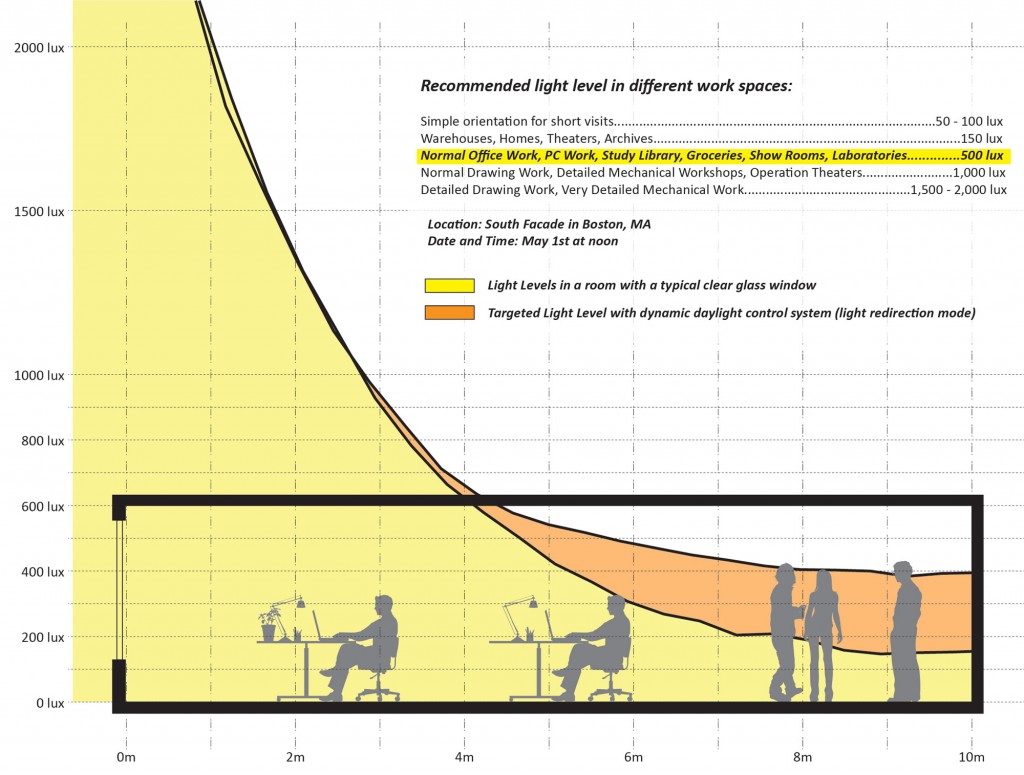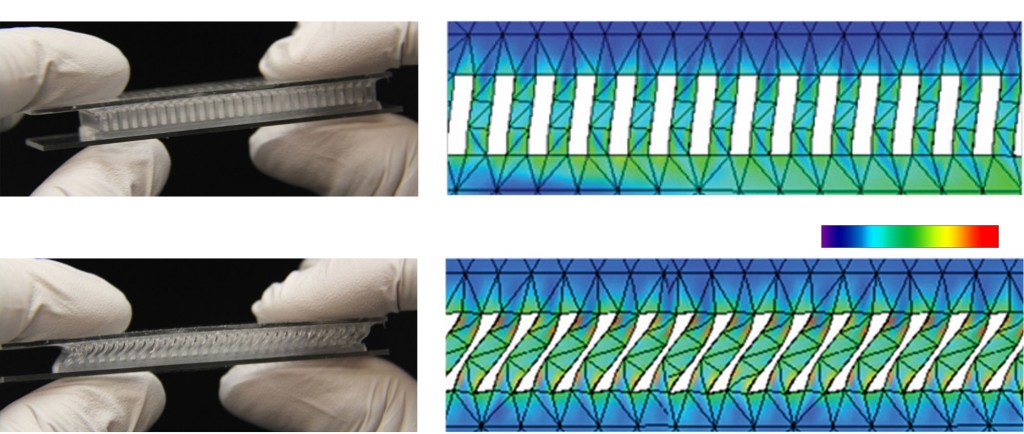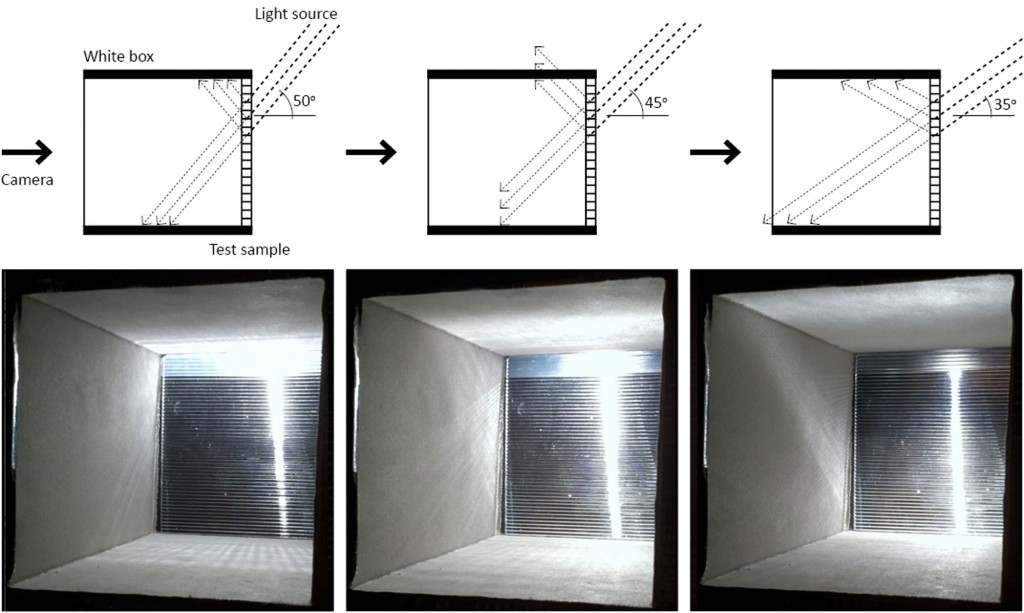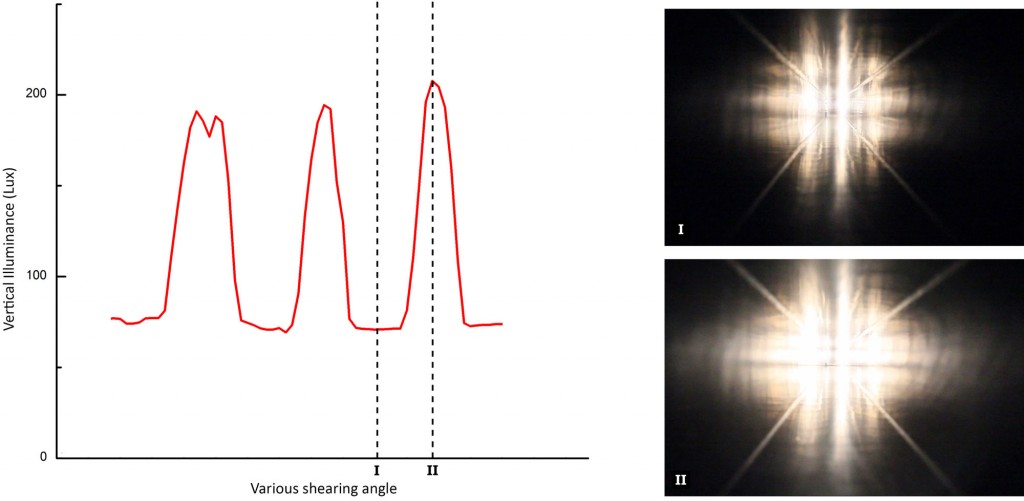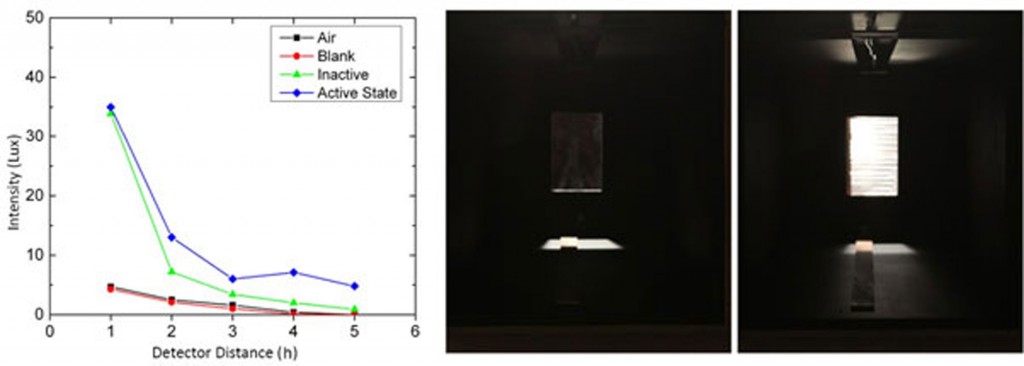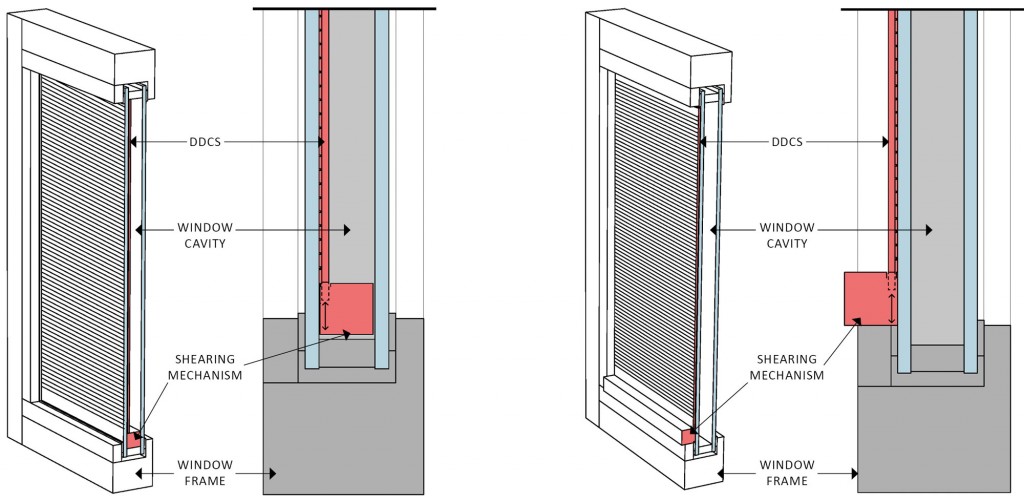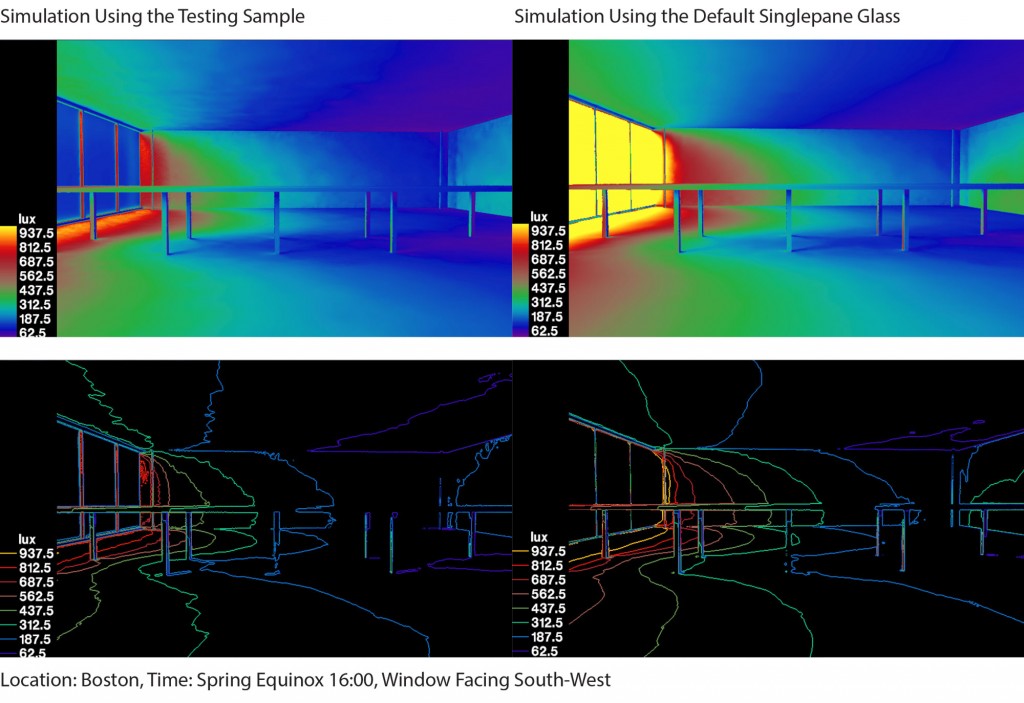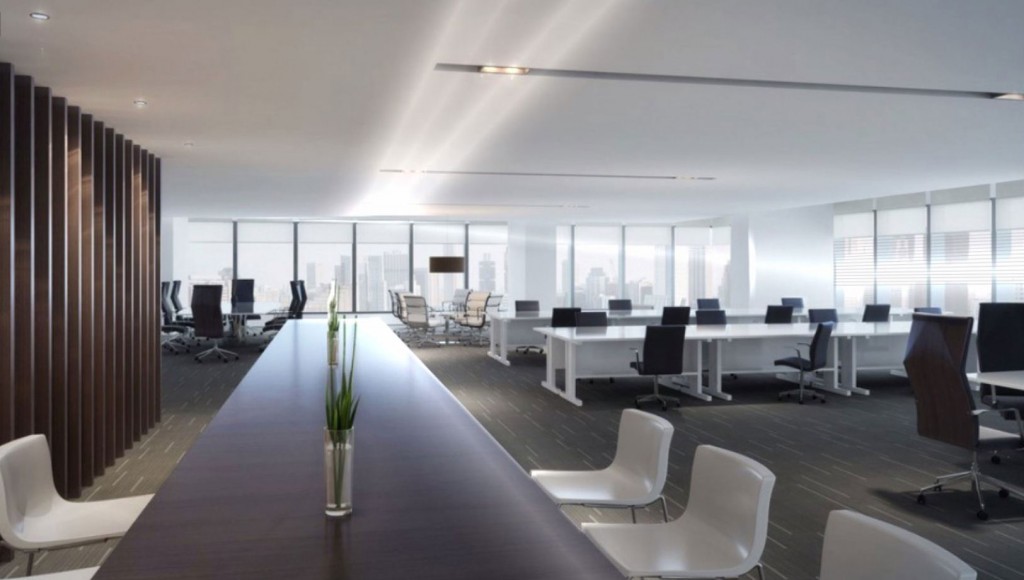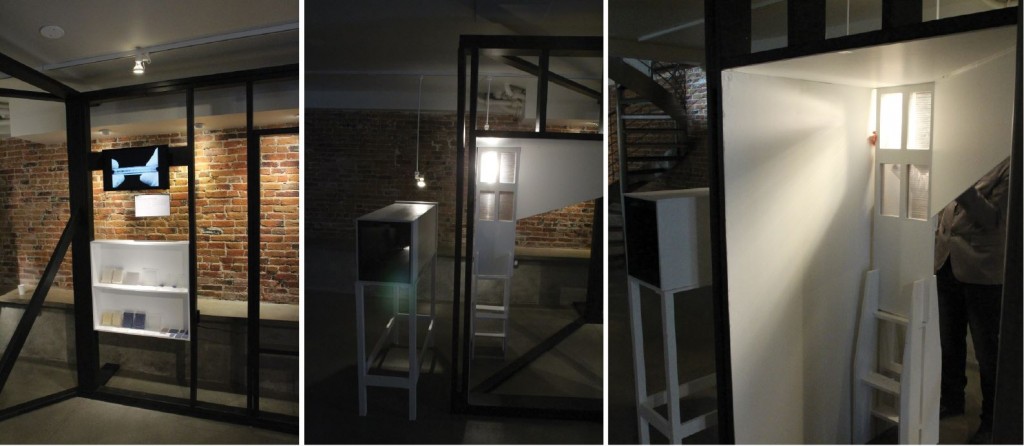The deep building layouts typical in the U.S. have led to a nearly complete reliance on artificial lighting in standard office buildings. The development of daylight control systems that maximize the penetration and optimize the distribution of natural daylight in buildings has the potential for saving a significant portion of the energy consumed by artificial lighting, but existing systems are either static, costly, or obstruct views towards the outside. We report the Dynamic Daylight Control System (DDCS) that integrates a thin cast transparent polydimethylsiloxane (PDMS)-based deformable array of louvers and waveguides within a millimeter-scale fluidic channel system. This system can be dynamically tuned to the different climates and sun positions to control daylight quality and distribution in the interior space. The series of qualitative and quantitative tests confirmed that DDCS exceeds conventional double glazing system in terms of reducing glare near the window and distributing light to the rear of the space. The system can also be converted to a visually transparent or a translucent glazing by filling the channels with an appropriate fluid. DDCS can be integrated or retrofitted to conventional glazing systems and allow for diffusivity and transmittance control.
Dynamic Louvers
Dynamic Daylight Control System: Thin cast polydimethylsiloxane-based millimeter-scale transparent louvers
Publication
- Park, Daekwon, Philseok Kim, Jack Alvarenga, Keojin Jin, Joanna Aizenberg, and Martin Bechthold. 2014. “Dynamic Daylight Control System Implementing Thin Cast Arrays of Polydimethylsiloxane-Based Millimeter-Scale Transparent Louvers.” Building and Environment 82 (December): 87–96. doi:10.1016/j.buildenv.2014.07.016.
Patent
- Aizenberg, Joanna, Allen Sayegh, Timur DOGAN, Christian ERVIN, Kiel Kenneth MOE, Jack Alvarenga, Martin BECHTHOLD, Benjamin Hatton, Philseok Kim, and Daekwon PARK. 2014. “Dynamic Light Control System and Methods for Producing the Same.” http://www.google.com/patents/WO2014078812A1.
This research describes a multi-functional yet simple Dynamic Daylight Control System (DDCS) composed of integrated millimeter scale transparent light reflectors and guides that can be dynamically adjusted in relation to the sun angle. The prototypical system consists of an array of small deformable louvers made of a transparent silicone elastomer, polydimethylsiloxane (PDMS), which refract and guide light. PDMS is a highly transparent (λ ≥ 300 nm), durable, hydrophobic, non-toxic, biocompatible, and chemically inert material with excellent stability against degradation by ozone and UV. For this reason, PDMS has been used as long-term, reliable protection materials for circuits and electronic components, barriers against contaminations such as acids and bases, durable dielectric insulation, and shock and vibration absorbing materials to relieve stress with a wide range of operation temperature (-45°C to 200°C) and humidity. In addition, it has been widely used as a prototyping material for microfluidics, micro-optical devices, and lab-on-a-chip devices and can be bonded to itself or to other materials.
Multiple stages of prototyping confirmed the validity of redirecting light and the ability to control translucency and opacity by integrating selected fluids. The prototyping process consists of three primary steps: design of the louvers, casting the louvers, and mounting the louvers to glass panes.
We have demonstrated a daylighting system that can achieve various functionalities within a single layer material system that can be integrated seamlessly in both new window system construction or retrofitted to an existing window system. By adjusting the fluid inside the channels of a Dynamic Daylight Control System (DDCS), we have demonstrated three distinct functional states: light redirection state (empty channels), clear state (index matched liquid filled channels), and light dimming state (translucent or opaque liquid filled channels). These states are reversible and dynamically adjustable. Several iterations of DDCS samples were designed and fabricated utilizing rapid prototyping technology and conventional casting techniques. The characteristics and performance of the samples were tested using both qualitative and quantitative methods and the results verified the core attributes of DDCS. These include dynamic adjustment of the lighting level through filling the channels with different media (air or liquid) and shearing actuation of the PDMS louvers; provide unobstructed view by becoming completely transparent using index matched liquid; and effective light redistribution through reducing the light level in front of the space and redirecting light to the back of the space.
The DDCS can be either integrated into a new window system or retrofitted to an existing window system. Applications in larger glazed facades are also under investigation. In the new construction window system application, DDCS may be directly attached inside the double pane window cavity. The cavity of the double pane window is utilized as the chamber for the liquid or gas. The cavity of the window frame can house the fluid circulation components and shearing mechanism. In the window retrofit situation, DDCS can be attached to one of the glass surfaces of an existing window. In this case, the DDCS needs to be a self-contained unit with sealed fluid chamber, fluid circulation apparatus, and shearing mechanism.

